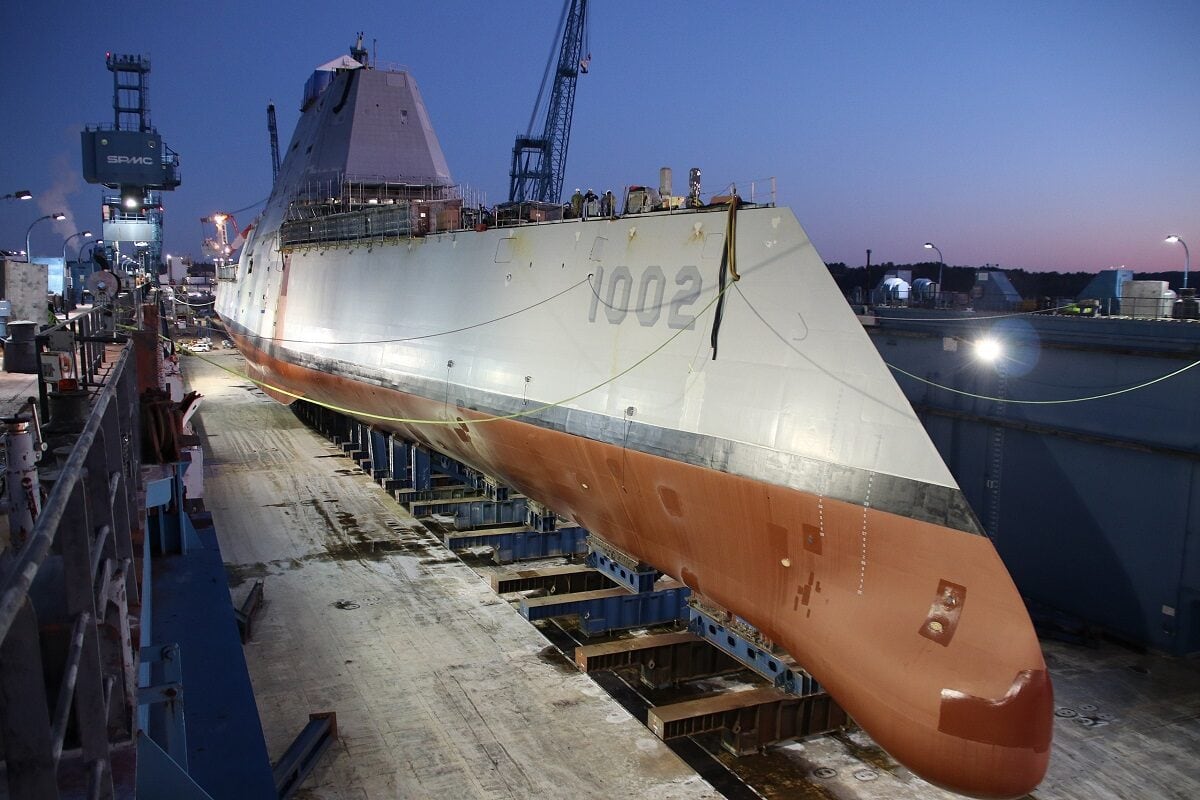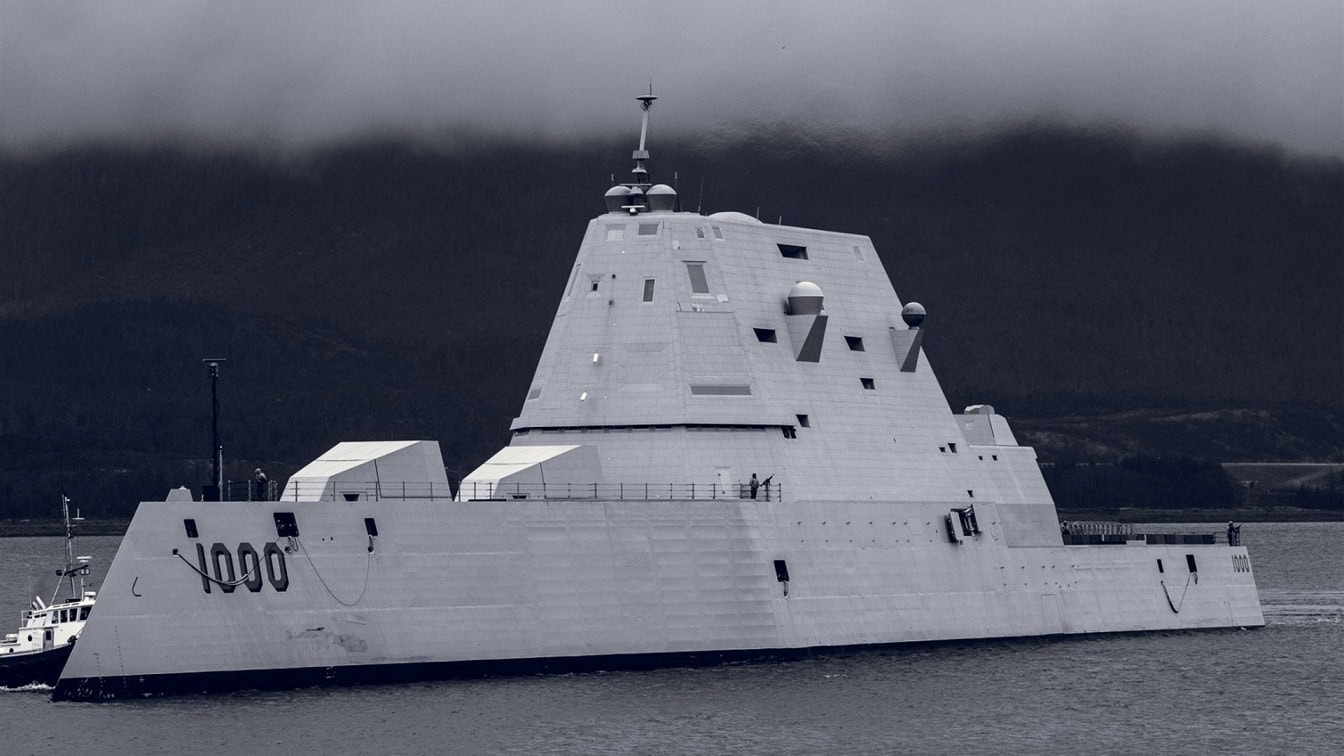The US Navy’s Zumwalt-class destroyer was marketed with fanfare and hype; the new ship was meant to be the future of the Navy’s surface warfare capabilities. Built around stealth technology and ultra-modern weapons systems, the Zumwalt was slated to replace outdated Arleigh-Burke-class destroyers. At first, the Navy was all in, intending to procure 32 Zumwalts. But as the F-22, F-35, or Ford-class carrier developers could tell you, designing new, groundbreaking weapons platforms doesn’t always go as planned; the Zumwalt program went way over budget – and the ship performed below expectations. Naturally, the Navy withdrew their support for the overpriced, underperforming vessel; the Navy asked Congress to please stop buying the Zumwalt. Instead, the Navy wanted to stick with what they knew, with what had proven itself: the Arleigh Burke destroyers that the Zumwalt was meant to replace. Congress agreed. Only three of the 32 planned Zumwalts were ever delivered to the Navy.
Why the Zumwalt Can’t Seem to Get It Together
For all the faults of the Zumwalt, the program can’t be faulted for its ambition – the designers really went for it, packing the new ship with innovative tech. First of all, the Zumwalt was a stealth ship with low radar observability. Actually, the Zumwalt, which is about 40 percent bigger than the Arleigh Burke, has a drastically smaller radar cross-section (RCS); the Zumwalt’s RCS is about the size of a fishing boat. The secret to the Zumwalt’s low RCS is in the hull specifications. The ship’s hull actually grows narrower above the waterline in what is known as a tumblehome style. The tumblehome harkens back to wooden warships, which often relied on the unique structure. Tumblehomes even had a brief spike of popularity in the late 19th century, with steel warships. But the Russo-Japanese War, in which the Russians lost three tumblehome battleships, spooked shipbuilders from relying on the tumblehome style. Further reducing the Zumwalt’s RCS is the composite deckhouse, which uses low RCS material to obscure the ship’s high-RCS sensory and electronic equipment. The combination of the tumblehome hull with the composite deckhouse make the Zumwalt’s RCS 50 times harder to detect than older destroyers. Additionally, the Zumwalt was built with a low acoustic signature, making it about as quiet as the especially stealthy Los Angeles-class submarine.
Although, some pundits are concerned with the utility of the Zumwalt’s stealth; the ship was designed to provide Naval Surface Fire Support, especially for land attacks. Accordingly, the Zumwalt will be asked to function in crowded, near-shore environments where ships can just be tracked visually. The Zumwalt’s stealth might not mean much under such circumstances. Additionally, the Zumwalt was built to fire its sizable weapons load – and once the ship is firing, its stealth properties will be compromised.
Indeed, the Zumwalt was impressively outfitted with advanced weaponry – the ship was built to provide fire support after all. Specifically for the Zumwalt, BAE built the Advanced Gun System (AGS). And again, specifically for the Zumwalt, Lockheed Martin built the Long-Range Land Attack Projectile (LRLAP) as ammunition for the AGS. The LRLAP is a rocket-assisted, 155m projectile with fin glide trajectory. The problem is that the AGS only fires the LRLAP. And the Navy canceled its order for the LRLAP. Which means the AGS does not have any ammunition. Brilliant.

(Dec. 9, 2018) Following a multi-day process that includes moving the ship from the land level facility to the dry dock, the future USS Lyndon B. Johnson (DDG 1002) is made ready before flooding of the dry dock at General Dynamic-Bath Iron Works shipyard, and subsequent launching of the third Zumwalt-class destroyer. (U.S. Navy photo courtesy of General Dynamics-Bath Iron Works/Released)
The LRLAP worked well enough – hitting targets accurately from a range of 59 miles out – but the cost was prohibitive. When the Zumwalt program was cut from 32 boats to three, the cost per unit of everything associated with the project went up. Way up. The cost for developing each shell was astronomical – and the price for each shell went up to $800,00-$1,000,000. The Navy felt that cost was unacceptable as buying 2,000 LRLAP rounds, as originally planned, would have cost $2 billion. The AGS will be removed from the Zumwalt in 2023.
Harrison Kass is the Senior Defense Editor at 19FortyFive. An attorney, pilot, guitarist, and minor pro hockey player, he joined the US Air Force as a Pilot Trainee but was medically discharged. Harrison holds a BA from Lake Forest College, a JD from the University of Oregon, and an MA from New York University. He lives in Oregon and listens to Dokken. Follow him on Twitter @harrison_kass.

